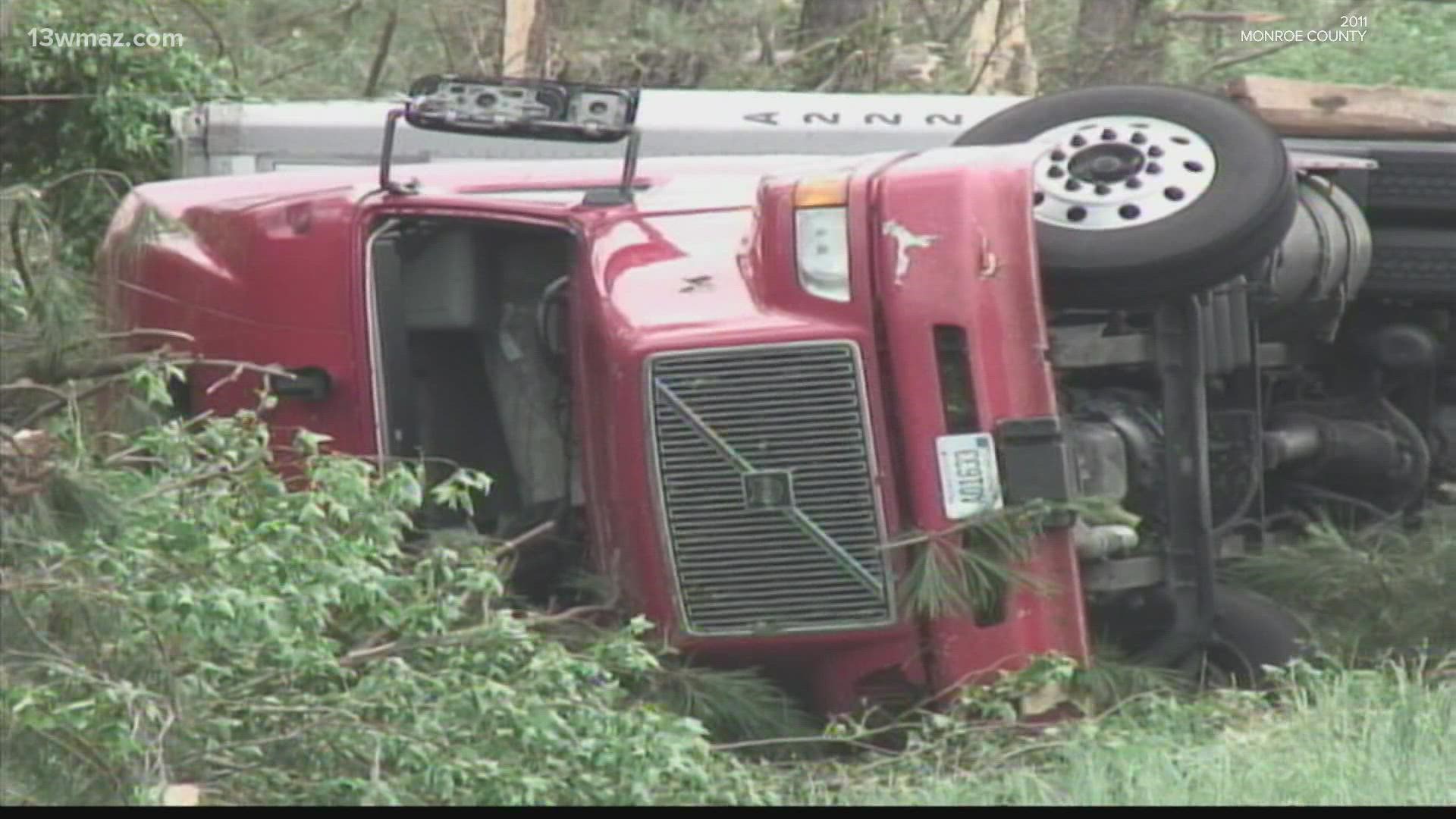FORSYTH, Ga. — 13WMAZ is remembering historical weather events that left a lasting mark on our community by visiting with the 13WMAZ Storm Lab.
In April 2011, one tornado out of more than 300 across the Southeast U.S. struck Butts, Lamar, Pike and Monroe counties as an EF-3, just hours after the devastating tornado spawned from the same system struck Tuscaloosa.
The EF-3 tornado touched down originally in Pike County around 12:30 a.m. before travelling northeast into Lamar County, where it killed two people in a home just outside Barnesville.
The tornado continued its path across northern Monroe County, where it damaged several homes.
The National Weather Service determined that the winds peaked at 140 mph in Lamar County, but still caused EF-2 level damage in Monroe County.
The tornado crossed I-75 between the High Falls Road and Johnstonville Road exits, flipping three tractor trailers and downing trees throughout the tornado's path.
A little over an hour later, an EF-1 tornado also touched down in Putnam County near Lake Sinclair. Many trees were downed and several homes around the lake saw damage, but no one was hurt.
In total, 360 tornadoes were confirmed to have touched down in the span of just over three days, causing 324 fatalities.
Other tornadoes, including four EF-5s, struck in Alabama, Arkansas, Kentucky, Louisiana, Mississippi, New York, Tennessee, and Virginia.
TORNADO SAFETY TIPS
While often we know that severe weather could be on its way well in advance, the storms themselves -- including tornadoes -- often pop up quickly. Knowing what to do is critical.
Do you know where your weather shelter/safe room is located? Do you have a severe weather survival kit (click here for a list of recommended items)?
If you are indoors:
- Go to a safe room, a basement or a storm cellar
- If you are in a building with no basement, then get to a small interior room on the lowest level.
- Stay away from windows, doors, and outside walls.
- Take additional cover by shielding your head and neck with your arms and putting materials such as furniture and blankets around you.
- Listen to EAS, NOAA weather radio, or local alerting systems for current emergency information and instructions.
If you are outdoors:
- Do not get under an overpass or bridge. You’re safer in a low, flat location.
- If you are in a car or outdoors and cannot get to a building, cover your head and neck with your arms and cover your body with a coat or blanket, if possible.
- Do not try to outrun a tornado in a vehicle.
- Watch out for flying debris that can cause injury or death.
What you need for your tornado safety kit
- Baby supplies (diapers, food, etc.)
- Pet supplies (food, leash, etc.)
- Gallons or bottled water for each member of your family (including pets)
- Flashlight or lantern with extra batteries
- Moist towelettes & garbage bags for personal sanitation
- Cell phone car charger or battery operated chargers
- First aid kit
- Cash (preferably in smaller bills)
- Sturdy shoes and gloves in case of broken glass
- Non-perishable food (canned goods, granola bars, etc.)
- Manual can opener for food
- Medicines
- Two blankets
- A change of clothes
- Weather radio/iPad to keep informed on the storms
- Helmet for each member of the family
STAY ALERT | Download our FREE app now to receive breaking news and weather alerts. You can find the app on the Apple Store and Google Play.

